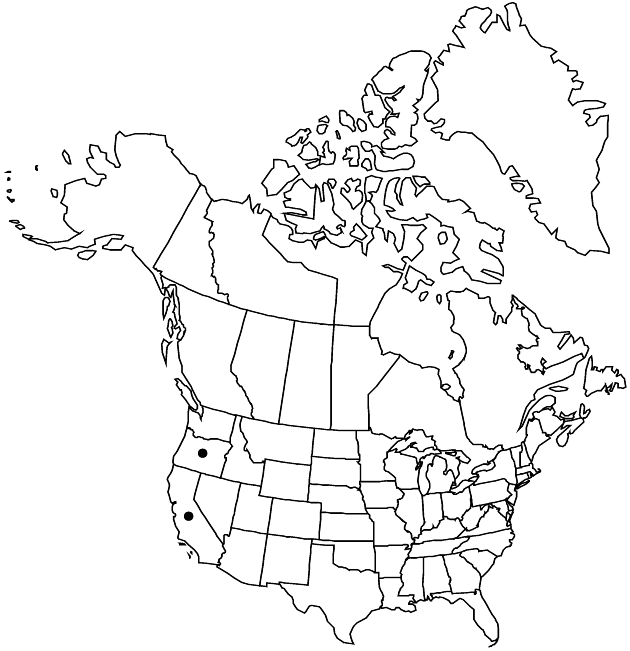Helianthus bolanderi
Proc. Amer. Acad. Arts 6: 544. 1865.
Annuals, 60–150 cm. Stems erect, hispid to hirsute. Leaves mostly cauline; mostly alternate; petioles 1–4 cm; blades lance-linear or lanceovate to ovate, 3–15 × 2–6 cm, bases cuneate to truncate, margins usually serrate, abaxial faces sparsely hirsute, glanddotted. Heads 1–3. Peduncles 3–13 cm. Involucres hemispheric, 17–25 mm diam. Phyllaries 10–18, usually lanceolate to lanceovate, 9–27 × (3–) 3.5–5 mm (often surpassing discs), apices gradually attenuate, abaxial faces hirsute. Paleae 9.5–10.5 mm, 3-toothed (middle teeth subulate, surpassing discs, apices glabrous). Ray-florets 12–17; laminae 14–20 mm. Disc-florets 75+ (discs usually 2+ cm diam.); corollas 5–7 mm, lobes usually reddish; anthers dark, appendages dark (style-branches reddish). Cypselae 3.5–4.5 mm, glabrate; pappi of 2 lanceolate scales 1.7–3 mm. 2n = 34.
Phenology: Flowering summer–early fall.
Habitat: Grassy, often disturbed sites
Elevation: 10–1200 m
Discussion
Helianthus bolanderi and H. exilis form a closely related pair of sister species that share the distinctive feature of having the middle teeth of the paleae glabrous and relatively elongated, surpassing the disc florets. As treated here, H. bolanderi corresponds to the “valley weed race” (C. B. Heiser 1949; L. H. Rieseberg et al. 1988); it is separated from the “serpentine foothill race,” here recognized as H. exilis. Heiser proposed that H. bolanderi originated through hybridization between H. annuus and H. exilis; molecular studies by Rieseberg et al. do not support this scheme. In an ironic twist, it appears that H. bolanderi may be undergoing “genetic assimilation” through hybridization with H. annuus (S. E. Carney et al. 2000).
Selected References
None.
